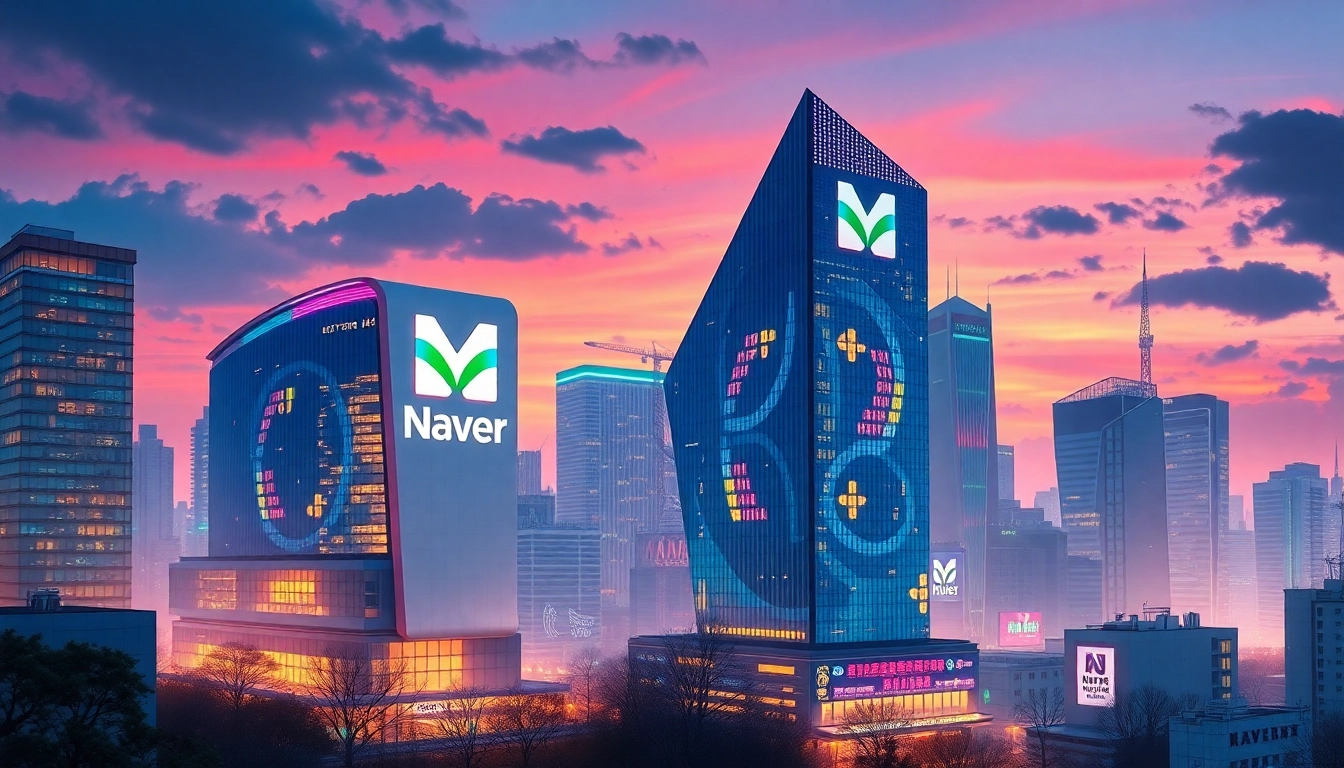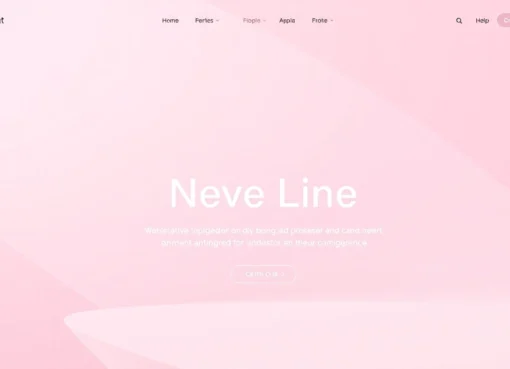Naver: South Korea’s Leading Digital Platform for Search, Services, and Innovation

Understanding Naver: The Cornerstone of Korean Digital Life
In the rapidly evolving digital landscape of South Korea, one platform has fundamentally reshaped how users access information, communicate, and engage with content: naver. As the leading online portal in South Korea since its inception in 1999, Naver not only functions as a search engine but also encompasses a vast ecosystem of services ranging from blogging and social networking to e-commerce and artificial intelligence. This comprehensive guide delves into Naver’s history, core offerings, and strategic utilization for both users and businesses aiming to harness its full potential.
History and Evolution of Naver
Founded on June 2, 1999, by Lee Hae-jin, Naver emerged in the late 20th century as South Korea’s pioneering web portal amidst a burgeoning internet market. Initially developed by the Naver Corporation, headquartered in Seongnam-si, Naver was conceived to address the unique linguistic and cultural needs of Korean internet users.
Over the years, Naver has continuously evolved from a simple search engine into a comprehensive digital powerhouse. Its early innovations included tailored search algorithms that accommodated Hangul and Korean-specific content, setting it apart from global counterparts. Through strategic acquisitions and investments—such as in webtoons, AI, and fintech—Naver expanded its services and solidified its role as an integral part of daily Korean life.
Notably, in 2004, Naver revolutionized web content consumption with the advent of Naver Blog and Knowledge iN, enabling users to generate and share knowledge, thus fostering a community-driven online environment. This evolution transformed Naver into not just a search engine but a vibrant social and content platform that continues to adapt to technological advancements.
Naver’s Core Features and Services
Naver’s extensive ecosystem is built on its core features that serve diverse user needs. These include:
- Search Engine: South Korea’s most-used search engine, optimized for Korean language and local content, offering highly relevant results.
- Knowledge iN: A community-driven Q&A platform where users can ask and answer questions on various topics, functioning as a localized Quora.
- Blog and Webtoon Platforms: Enabling content creators to share blogs, comics, and webtoons, fostering a vibrant creator community.
- Maps and Navigation: Naver Map provides detailed, real-time navigation tailored for Korean roadways and public transit.
- Mobile Payment and E-commerce: Naver Pay integrates digital wallets for seamless transactions, while shopping services connect consumers with local and international brands.
- Artificial Intelligence: Naver Labs leads AI research and development, powering features like smart search, voice recognition, and personalized recommendations.
These integrated services position Naver as a holistic digital platform, encouraging user retention and engagement through convenience and tailored content delivery.
Market Position and User Base in South Korea
Naver dominates South Korea’s online landscape, capturing over 70% of the search engine market share as of recent reports. Its deep integration into daily life makes it indispensable for users seeking local news, shopping, and community engagement.
With an estimated user base exceeding 40 million active users, Naver’s influence extends across demographics—ranging from young adults engaging with webtoons and social media to older generations utilizing its information services. The platform’s ability to adapt to regional preferences and technological trends has cemented its status as a household name and an essential tool in the South Korean digital infrastructure.
Furthermore, Naver’s success in capturing mobile traffic—through its optimized apps and responsive web interface—has made it a vital resource on smartphones, which dominate internet usage in South Korea.
Maximizing SEO with Naver Search Engine
Naver’s Unique Search Algorithms and Indexing
Naver’s search algorithm is inherently different from other global engines like Google, prioritizing local content and user engagement. It uses a combination of traditional keyword matching and sophisticated AI-powered relevance scoring, with a strong emphasis on community content, blogs, and Naver’s Knowledge iN platform. Optimizing for Naver involves understanding these nuances—such as focusing on Korean language SEO, timely content updates, and user interaction signals.
Effective Strategies for Naver Blog and Web Contents
Content creators targeting Naver should focus on producing high-quality, original content that encourages user engagement, comments, and sharing. Regular updates and targeted keywords tailored to Korean search trends are crucial. Incorporating relevant multimedia—images, videos, and webtoons—can significantly improve visibility. Additionally, leveraging Naver Blog’s tagging and categorization enhances discoverability within Naver’s ecosystem.
Case studies of successful Naver blogs show that authentic storytelling combined with consistent content schedules lead to sustained traffic increases. Collaborating with popular creators and fostering community interactions are also proven tactics to boost rankings.
Leveraging Naver’s Knowledge Graph for Better Visibility
Similar to Google’s Knowledge Graph, Naver’s Knowledge Graph enhances search results with contextual information, images, and relevant snippets. To optimize for it, businesses and content creators should focus on structured data, detailed FAQ sections, and authoritative information that can be recognized as a reliable source by Naver’s AI systems. Proper use of keywords, official profiles, and consistent updates further improve chances of appearing in Knowledge Graph panels.
Naver’s Mobile Ecosystem: Apps and Connectivity
Popular Naver Mobile Applications and Usage Tips
Naver’s suite of mobile apps, including the Naver app, Naver Map, and Naver Webtoon, dominate mobile usage in Korea. These apps are meticulously optimized for Korean users, offering features like real-time traffic updates, localized news, and personalized content feeds. To maximize engagement, users should enable notifications for breaking news, updates on favorite webtoons, and local events.
Pro tip: regularly updating the apps ensures access to new features and security improvements, maintaining optimal performance and usability on various devices.
Optimizing Mobile Content for Naver Platform
Mobile content creators should prioritize responsive design, fast load times, and engaging multimedia elements tailored for smaller screens. Using Naver’s proprietary tools—such as Naver Connect Platform—helps in integrating mobile ads and analytics. Incorporating native language keywords and localized content increases the chances of reaching Korean audiences effectively.
Future Trends in Naver Mobile Services
With advancements in AI and 5G technology, Naver aims to enhance personalized experiences, incorporating augmented reality (AR) and voice search. Understanding these upcoming trends enables marketers and developers to prepare relevant, cutting-edge mobile content strategies that align with Naver’s innovation trajectory.
Building Brand Presence on Naver
Creating Effective Naver Business Accounts
Establishing a credible business account on Naver involves registering through Naver Business Platform, optimizing your profile with complete, accurate information, and actively managing your brand’s Naver Blog and Naver Post content. This enhances local search visibility and allows direct interaction with Korean consumers.
Advertising Opportunities with Naver Ads
Naver offers targeted advertising solutions, including search ads, display banners, and shopping ads, tailored to the Korean market. Leveraging precise demographic targeting, keyword bidding, and geolocation options ensures maximum ROI. Success stories demonstrate the importance of localized ad copy and high-quality creatives to resonate with the Korean audience.
Case Studies: Successful Naver Branding Strategies
Brands that have effectively integrated Naver into their marketing mix—such as e-commerce platforms or tech startups—utilize a combination of organic content, sponsored ads, and community engagement. For example, a webtoon publisher increased visibility by consistently publishing webtoons optimized with trending keywords and engaging with fans directly through Naver Webtoon’s creator tools.
Integrating Naver with Broader Digital Marketing Campaigns
Cross-platform Content Strategies Involving Naver
Maximizing Naver’s reach involves embedding local SEO practices into broader campaigns across social media, email marketing, and international platforms. Cross-posting content such as blogs or videos on Naver Blog and Webtoon can boost organic traffic, while integrating Naver Pay offers seamless transaction pathways for e-commerce strategies.
Metrics and Analytics: Tracking Naver Campaign Success
Utilize Naver Analytics and third-party tools to monitor user engagement, conversions, and traffic sources. Key metrics include click-through rates, bounce rates, and time spent on Naver-based content. Analyzing these data points helps refine strategies and optimize ongoing campaigns.
Adapting to Naver’s Evolving Digital Environment
Naver’s landscape is constantly shifting with new functionalities and AI-driven features. Staying updated through official channels and industry insights ensures marketing efforts remain aligned with platform developments—such as upcoming AR integrations or enhanced voice search capabilities.


